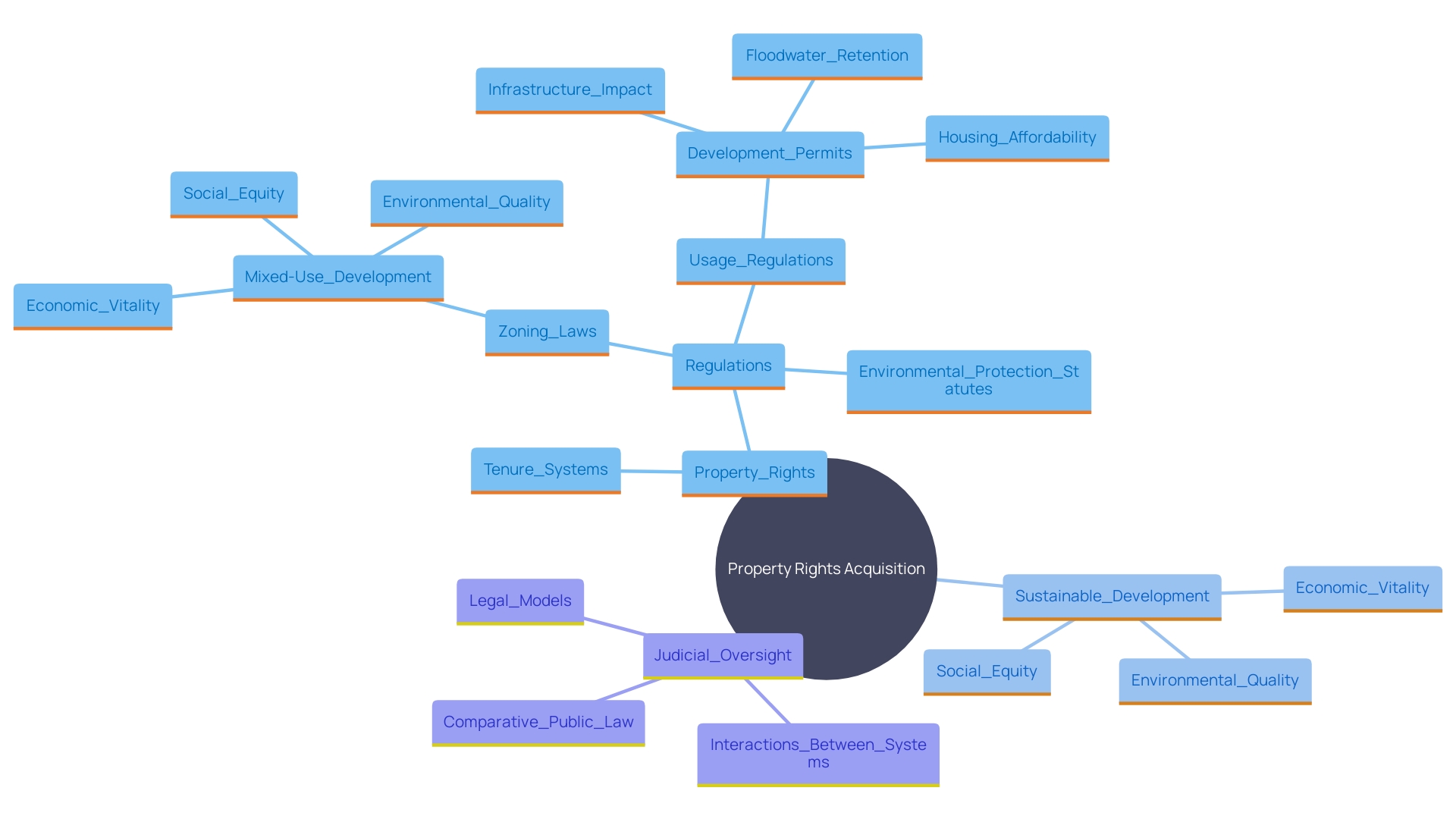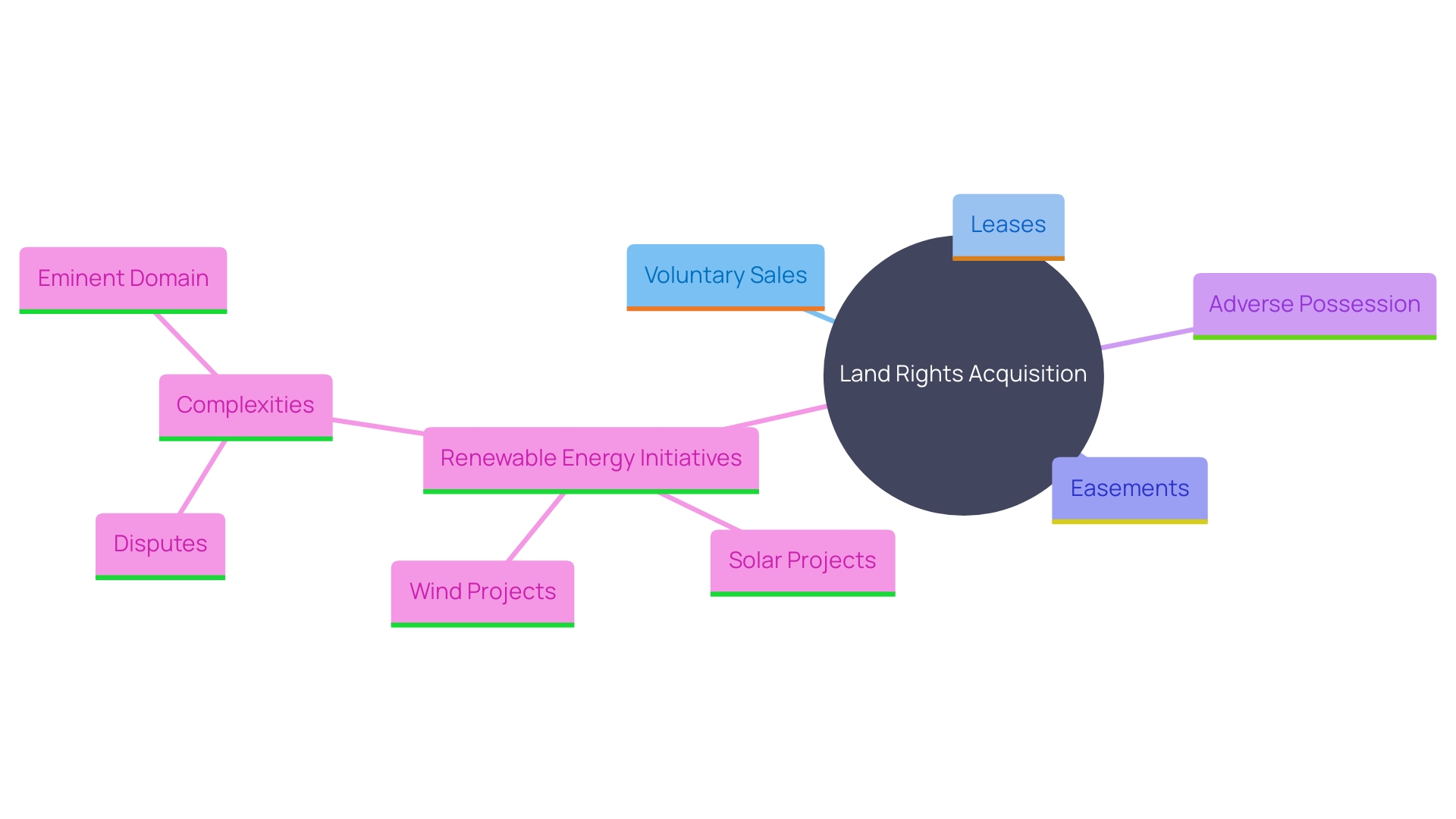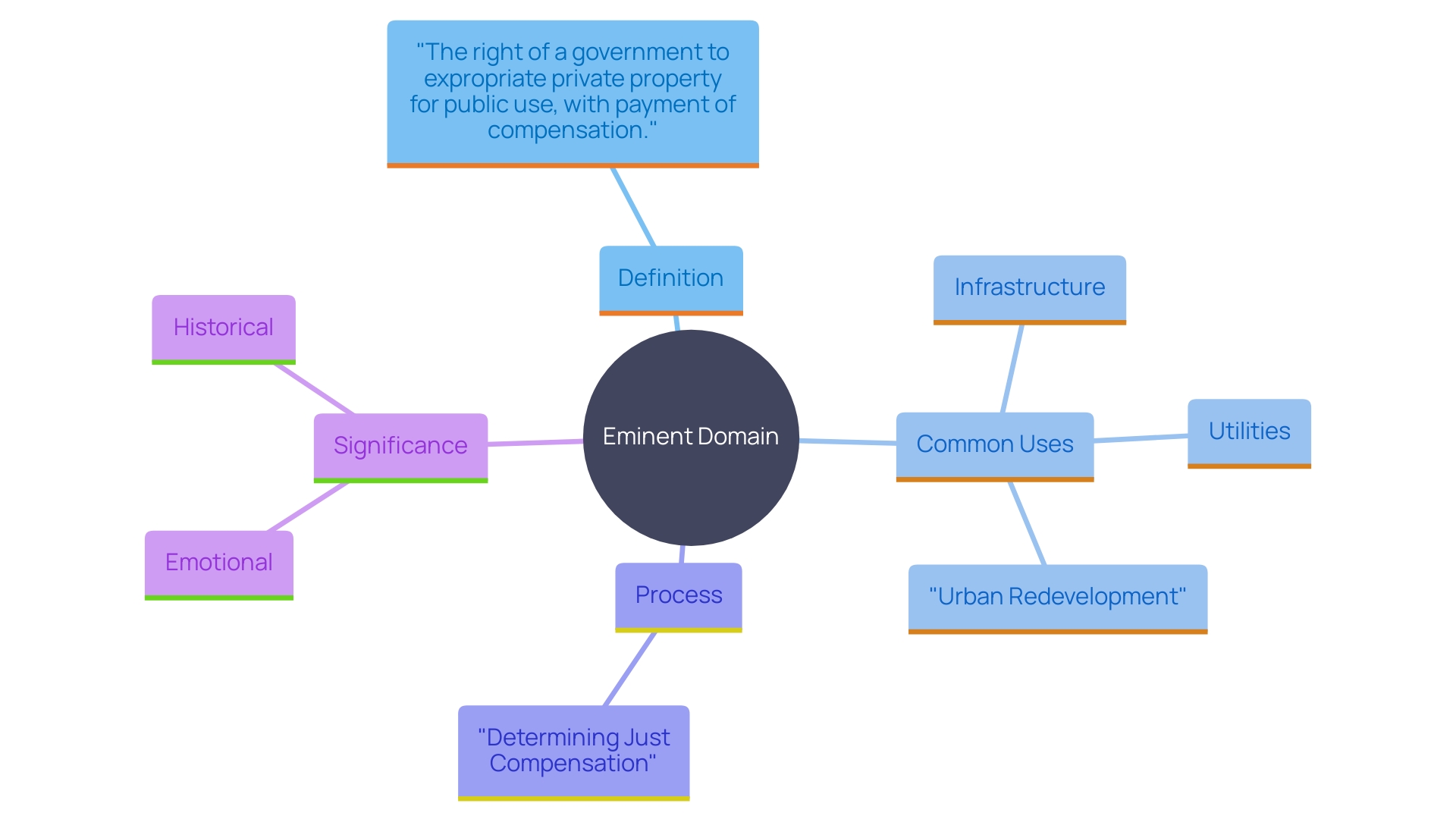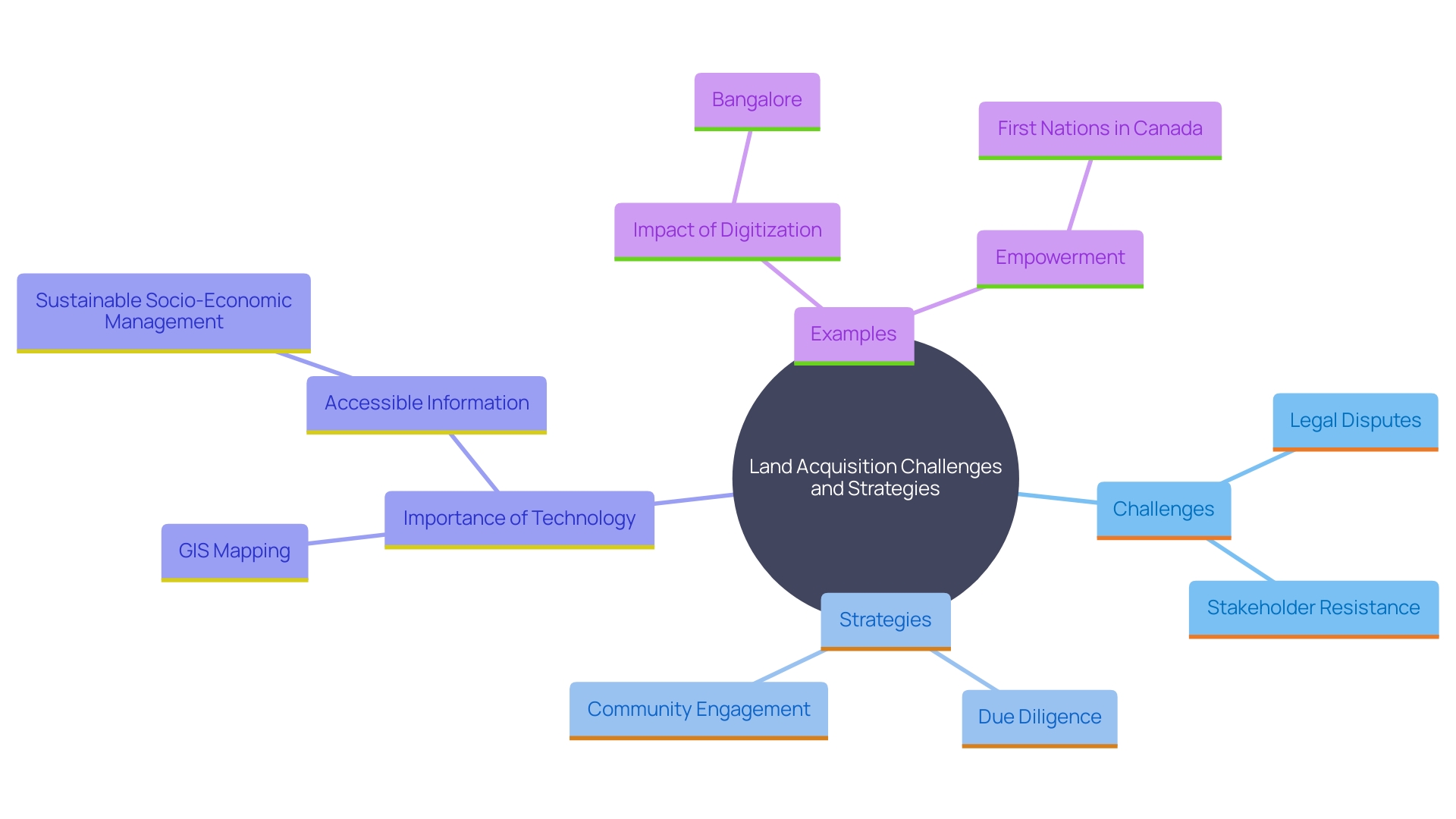Introduction
Navigating the complexities of land rights acquisition requires a robust understanding of the legal framework that governs property rights, land tenure systems, and the myriad of laws at various governmental levels. This article delves into the foundational concepts that underpin land acquisition, including key regulations such as zoning laws and environmental protection statutes which are critical for sustainable development. It further explores the different methods of acquiring land rights—ranging from voluntary sales to eminent domain—and the legal ramifications associated with each.
Additionally, the article examines the challenges and best practices in land acquisition, emphasizing the importance of due diligence, stakeholder engagement, and the utilization of advanced technologies to enhance decision-making. Through real-world examples and expert insights, the article provides a comprehensive overview of the intricate processes involved in land rights acquisition and the pivotal role of legal frameworks in ensuring equitable and sustainable outcomes.
Legal Framework: Key Concepts
Grasping the legal framework surrounding property rights acquisition is essential for maneuvering through the complex processes involved. At the core are property rights, which establish ownership and usage of terrain, and tenure systems that dictate the conditions for holding and transferring property. This framework also includes a myriad of laws at local, state, and national levels that regulate property acquisition. Key regulations encompass zoning laws, usage regulations, and environmental protection statutes, all of which play an essential role in ensuring sustainable development. For instance, the City of Chicago recently filed a lawsuit against major oil companies, highlighting the importance of judicial oversight in environmental protection. 'This case highlights how regulatory frameworks can hold entities accountable for their environmental impact, demonstrating the critical intersection of land rights and environmental law.'.

Types of Land Rights Acquisitions
Land rights can be acquired through several methods, each with distinct legal implications. These methods include voluntary sales, leases, easements, and adverse possession. Voluntary sales involve mutual agreement between the buyer and seller, while leases grant temporary use rights without transferring ownership. Easements allow specific usage rights over another’s property, and adverse possession enables an individual to claim ownership after continuous, unauthorized use over a defined period.
Renewable energy initiatives have significantly influenced property acquisition methods. For instance, the rapid expansion of wind and solar energy has heightened the demand for transmission lines, often leading to disputes between developers and private landowners. Meghan Dawson McElvy points out that this development has caused various conflicts, emphasizing the intricacies involved in obtaining territory for such projects.
Eric C. Camp, an expert in oil, gas, and mineral law, emphasizes the importance of protecting property rights amidst these developments. His experience representing operators, mineral owners, surface owners, and municipalities emphasizes the need for meticulous legal navigation in property transactions.
The push for renewable energy and carbon capture initiatives, supported by government policies, further complicates property acquisition. Margaret Byfield notes that eminent domain is increasingly utilized to facilitate large-scale renewable projects, reflecting a broader trend towards consolidating territory and resource control. This scenario exemplifies the significant legal and regulatory challenges faced in modern land acquisition.

Eminent Domain and Just Compensation
Eminent domain is the government's authority to obtain private land for public use, contingent upon providing just compensation to the landowner. This authority is frequently exercised for infrastructure projects, public utilities, or urban redevelopment. 'Determining 'just compensation' often involves disputes, requiring a meticulous assessment of the asset's market value, potential uses, and any emotional or historical significance it may hold.'. For instance, in Brentwood, Missouri, Martin and Anthony George have faced the threat of losing their family business land, which their father built over 35 years ago. The building is deeply embedded in their family's history, illustrating how monetary compensation can never fully account for the sentimental value attached to such properties.

Challenges and Best Practices in Land Acquisition
Land acquisition involves navigating complex challenges such as legal disputes, stakeholder resistance, and regulatory hurdles. Effective strategies for overcoming these challenges include rigorous due diligence, early engagement with community stakeholders, and transparent negotiation techniques. Employing technology, such as GIS mapping, greatly improves the efficiency of site evaluations and enables the visualization of possible effects, assisting in improved decision-making.
Accessible information can be a powerful tool in supporting land administration systems for sustainable socio-economic and environmental management. However, it is crucial to ensure that open information translates into effective utilization, accessible to a wide range of users. The risk of growing inequality through open information must be alleviated by providing necessary conditions and skills for its use. For instance, in Bangalore, India, digitization of land records empowered wealthier individuals to challenge land titles and exploit documentation errors, often to the detriment of poorer communities.
A framework for efficient information utilization includes components such as internet connectivity, suitable software, and abilities for analyzing and promoting based on information. Empowering vulnerable groups to manage their data, as seen with First Nations in Canada, can help prevent the negative impacts of data misuse.
Incorporating advanced technologies like geospatial tools can further facilitate informed decision-making. For example, a newly developed online tool provides insights into air quality, noise, and green spaces, enabling urban planners and residents to make better-informed decisions regarding sustainable urban development and public health improvements.

Conclusion
Navigating land rights acquisition necessitates a clear understanding of the legal frameworks that govern property rights and land tenure systems. These frameworks are essential for promoting sustainable development and ensuring equitable outcomes, with regulations like zoning laws and environmental protection statutes playing critical roles. Recent legal actions, such as those taken by the City of Chicago against oil companies, underscore the importance of legal oversight in environmental matters.
Land rights can be acquired through various methods, including voluntary sales, leases, and eminent domain, each with its own legal implications. The growth of renewable energy projects has introduced new challenges, particularly regarding land disputes and the application of eminent domain. Experts stress the need for careful legal navigation to protect property rights in this evolving landscape.
Eminent domain raises important questions about just compensation, as demonstrated by the George family's situation, where financial compensation does not account for the sentimental value of their property.
To address the complexities of land acquisition, best practices such as thorough due diligence, stakeholder engagement, and the use of advanced technologies are vital. Incorporating open data and geospatial tools can enhance decision-making and support sustainable land management. Ensuring that these resources are accessible to all, especially vulnerable communities, is crucial.
By implementing these strategies, stakeholders can effectively navigate the intricacies of land rights acquisition, fostering equitable and sustainable outcomes for everyone involved.




